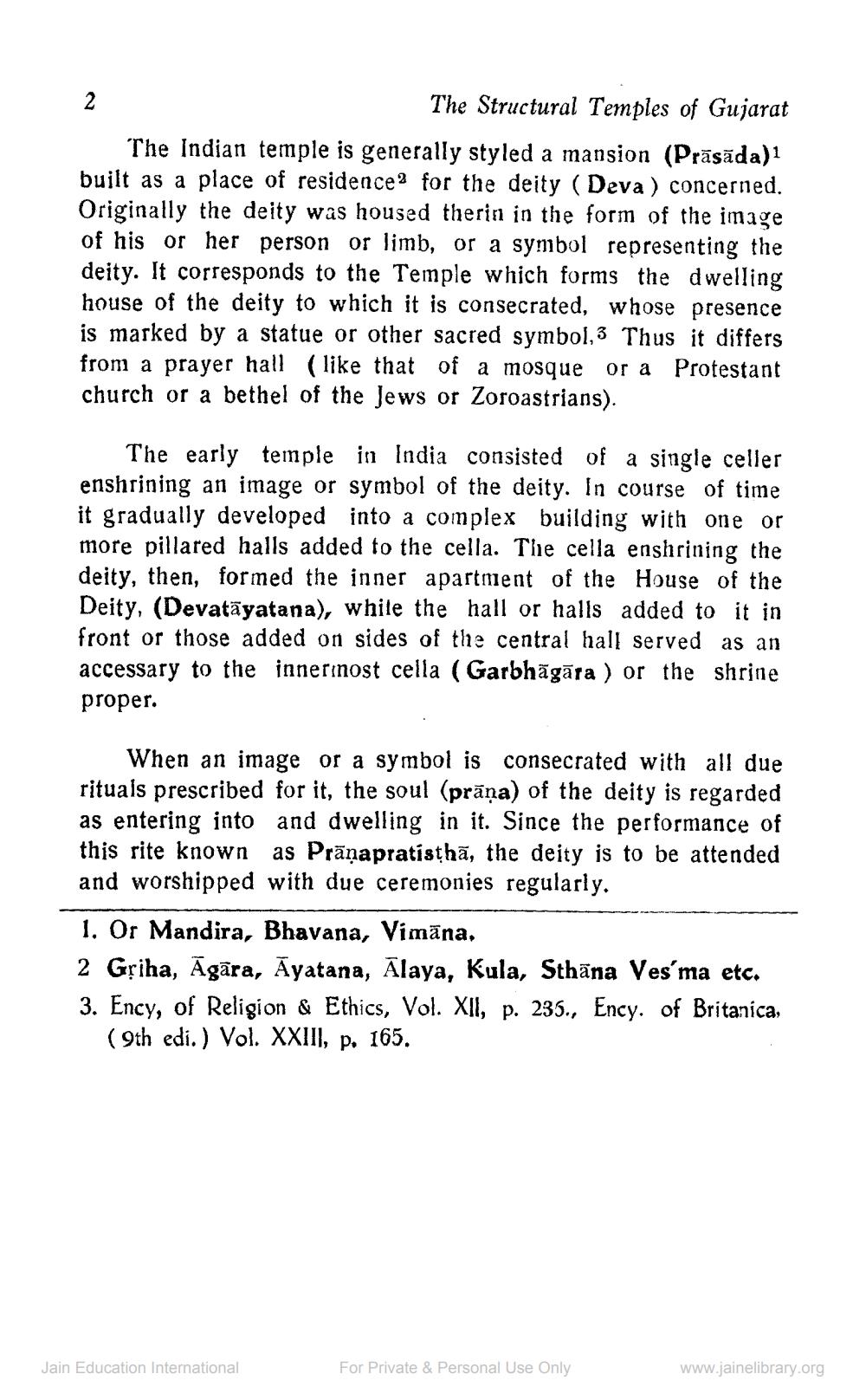________________
The Structural Temples of Gujarat
The Indian temple is generally styled a mansion (Prāsāda)1 built as a place of residence2 for the deity (Deva) concerned. Originally the deity was housed therin in the form of the image of his or her person or limb, or a symbol representing the deity. corresponds to the Temple which forms the dwelling house of the deity to which it is consecrated, whose presence is marked by a statue or other sacred symbol,3 Thus it differs from a prayer hall (like that of a mosque or a Protestant church or a bethel of the Jews or Zoroastrians).
The early temple in India consisted of a single celler enshrining an image or symbol of the deity. In course of time it gradually developed into a complex building with one or more pillared halls added to the cella. The cella enshrining the deity, then, formed the inner apartment of the House of the Deity, (Devatayatana), while the hall or halls added to it in front or those added on sides of the central hall served as an accessary to the innermost cella (Garbhāgāra) or the shrine proper.
When an image or a symbol is consecrated with all due rituals prescribed for it, the soul (praṇa) of the deity is regarded as entering into and dwelling in it. Since the performance of this rite known as Prāṇapratistha, the deity is to be attended and worshipped with due ceremonies regularly.
1. Or Mandira, Bhavana, Vimāna.
2 Griha, Agara, Ayatana, Ālaya, Kula, Sthana Ves ́ma etc. 3. Ency, of Religion & Ethics, Vol. XII, p. 235., Ency. of Britanica, (9th edi.) Vol. XXIII, p. 165.
Jain Education International
For Private & Personal Use Only
www.jainelibrary.org




